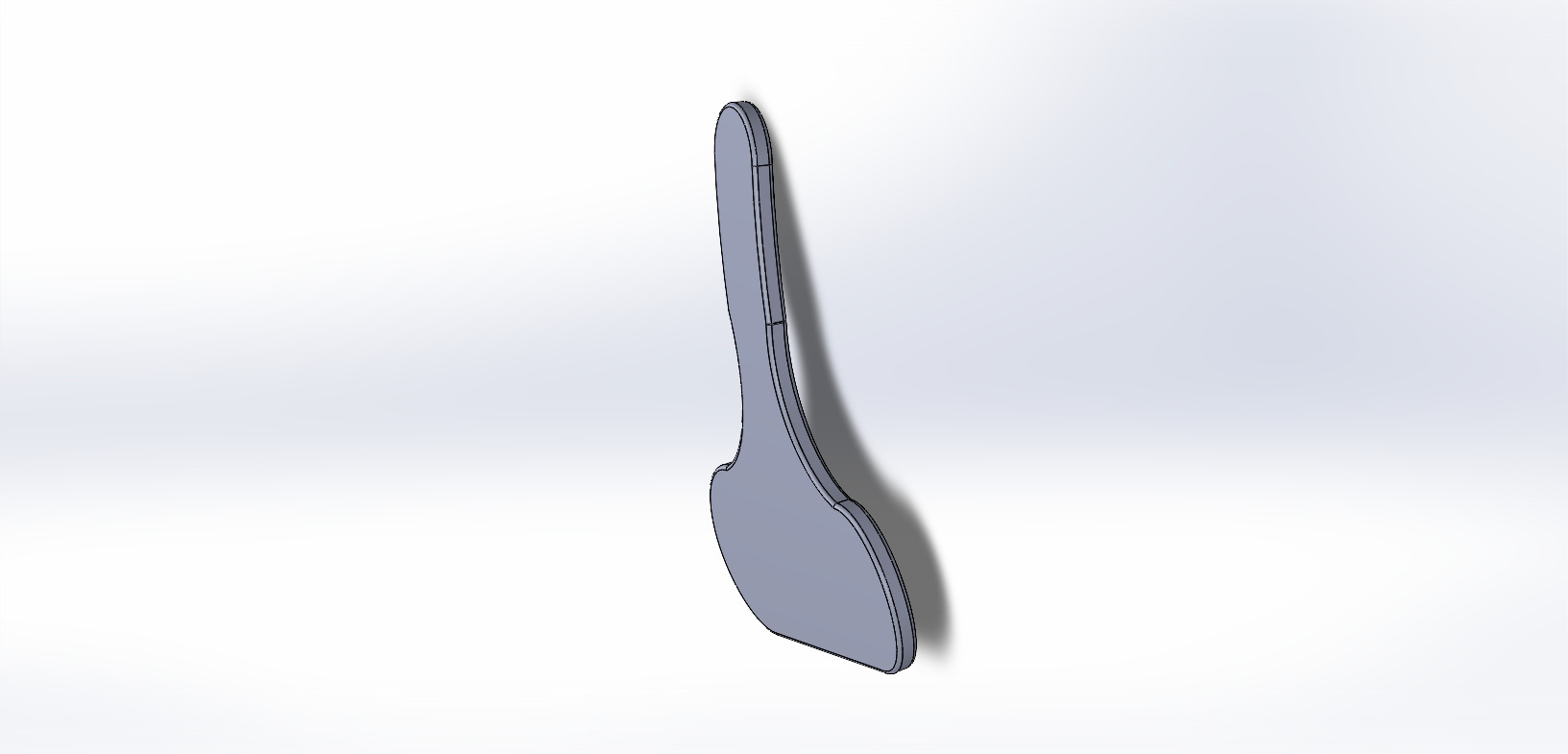The production of the back posture support device is centered around the design and manufacture of the semi-rigid back support insert. This section provides a comprehensive overview of the production methodology, covering component specifications, material properties, assembly processes, and packaging considerations.
1. Manufacturing Drawings of the Semi-Rigid Back Support
The manufacturing drawings provide precise dimensions of the semi-rigid back support insert, which is the primary load-bearing and supportive element of the device. The back support insert has been designed to conform to average anthropometric measurements of the human spine. The dimensions are as follows:
- Height: 133.20 mm, which spans the lumbar and lower thoracic regions of the spine.
- Base Width: 112.35 mm, ensuring adequate lateral coverage of the lower back.
- Neck Width: 26.41 mm, corresponding to the natural tapering of the spine near the mid-back.
- Flexion Angle: 20 degrees, mimicking the curvature of the lumbar spine during squats to ensure ergonomic alignment.

These dimensions were derived to balance user comfort, structural support, and biomechanical efficiency during squatting exercises.
2. Material Specifications
The selection of materials for the device is based on their biomechanical properties, user safety, and manufacturability. Each component is evaluated for its functionality and biocompatibility.
- Nylon Mesh Vest:
The nylon mesh vest is fabricated from a breathable and lightweight biocompatible material. This fabric allows for air circulation, minimizing sweat accumulation during use. Its flexibility and durability provide a comfortable fit while accommodating variations in user body shapes.
- Semi-Rigid Spine Support:
The spine support is constructed using polyurethane foam plastic filament, chosen for its unique combination of flexibility and rigidity. The semi-rigid nature ensures sufficient structural support while maintaining user comfort. The spine support is 3D printed to ensure high precision in achieving its ergonomic curvature of 20 degrees, which corresponds to the natural flexion of the lumbar spine during squats.
- Gel Cushioning Inserts:
Medical-grade gel inserts will be used to surround the spine support. These inserts are cut from pre-manufactured gel sheets and are tailored to fully encase the spine support. The gel provides pressure distribution and shock absorption, minimizing localized discomfort.
- Velcro Straps:
Industrial-grade Velcro straps will be incorporated into the vest design to allow for adjustable fitting.
3. Assembly Process
The device assembly process will be as follows:
- The nylon mesh vest will be cut into a standardized pattern using templates, allowing for consistent production quality.
- The spine support will be 3D printed, followed by post-processing steps such as sanding to ensure smooth edges.
- Gel inserts will be precision-cut to dimensions slightly larger than the spine support to allow complete encapsulation.
- The gel cushioning will be sewn around the spine support to create a cohesive unit that provides both support and comfort. This assembly will then secured within a dedicated pocket in the nylon vest.
- The Velcro straps will be sewn onto predefined positions on the vest, ensuring an adjustable fit while maintaining structural integrity during repeated use.
- The assembled vest will be inspected for stitching consistency, proper alignment of components, and overall structural integrity.
- Care labels indicating “Hand Wash Only” and “Do Not Machine Wash” will be sewn onto the vest to guide users on maintenance.
4. Testing and Validation
Rigorous testing will be conducted at both the material and product levels to ensure safety and functionality:
- Biocompatibility Testing: All materials (nylon mesh, gel inserts, and Velcro) should comply with ISO 10993-10 and ISO 10993-12 standards, confirming their suitability for prolonged skin contact.
- Ergonomic Fit Assessment: Prototypes will be tested on individuals representing a range of body sizes to ensure the universal fit design provides adequate support and comfort.
- Durability Testing: The vest will undergo repeated stress tests to evaluate the longevity of the stitching, straps, and overall structural integrity.
5. Packaging and Labeling
The device will be packaged using existing recyclable materials to reduce environmental impact. A biodegradable cardboard box will serve as the primary packaging. Inside, the device will be wrapped in protective tissue paper to prevent dust accumulation. A user manual will accompany the product, detailing:
- Usage instructions.
- Care and maintenance guidelines.
- Safety precautions for prolonged use.